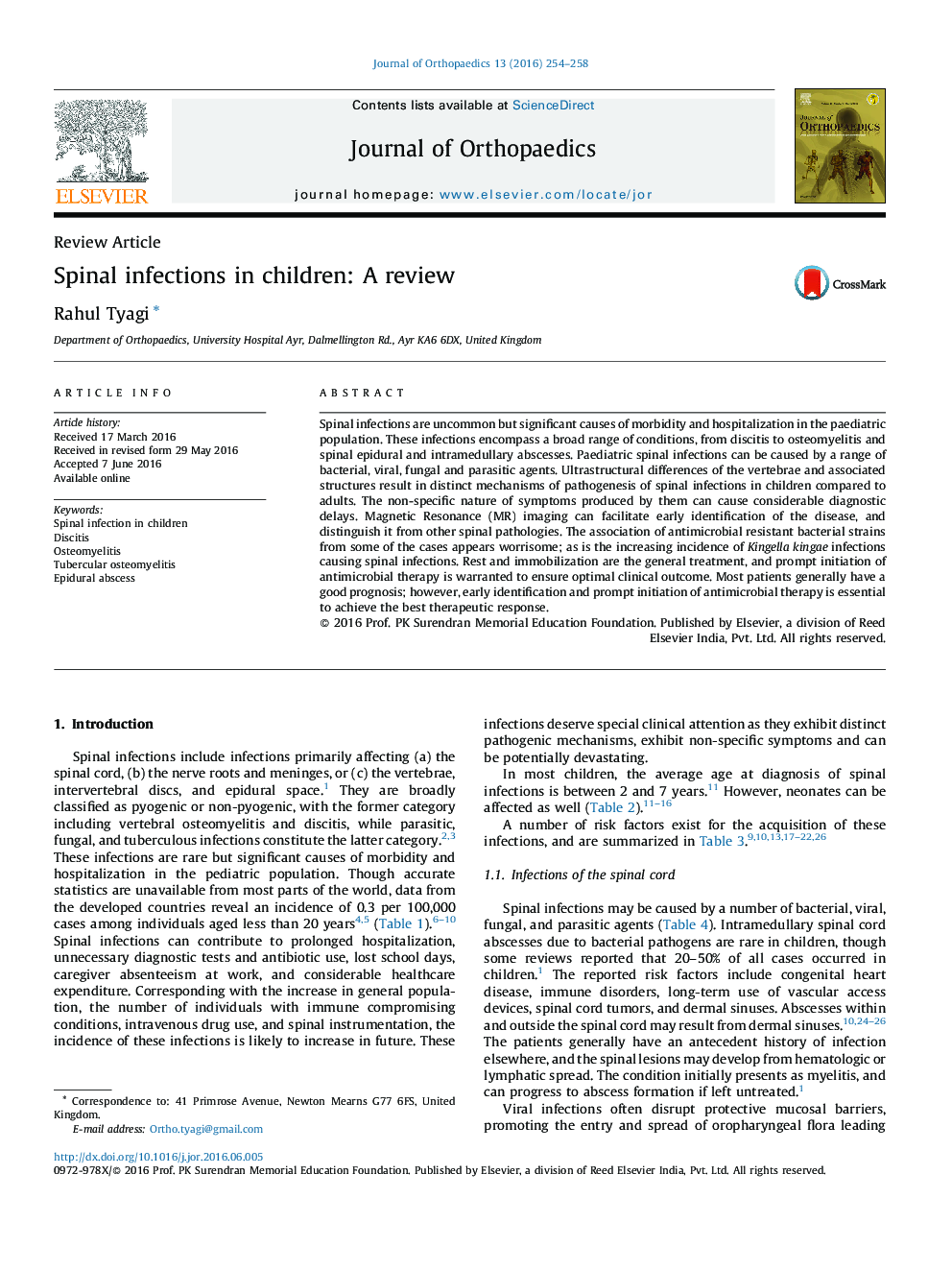| Article ID | Journal | Published Year | Pages | File Type |
|---|---|---|---|---|
| 3251641 | Journal of Orthopaedics | 2016 | 5 Pages |
Abstract
Spinal infections are uncommon but significant causes of morbidity and hospitalization in the paediatric population. These infections encompass a broad range of conditions, from discitis to osteomyelitis and spinal epidural and intramedullary abscesses. Paediatric spinal infections can be caused by a range of bacterial, viral, fungal and parasitic agents. Ultrastructural differences of the vertebrae and associated structures result in distinct mechanisms of pathogenesis of spinal infections in children compared to adults. The non-specific nature of symptoms produced by them can cause considerable diagnostic delays. Magnetic Resonance (MR) imaging can facilitate early identification of the disease, and distinguish it from other spinal pathologies. The association of antimicrobial resistant bacterial strains from some of the cases appears worrisome; as is the increasing incidence of Kingella kingae infections causing spinal infections. Rest and immobilization are the general treatment, and prompt initiation of antimicrobial therapy is warranted to ensure optimal clinical outcome. Most patients generally have a good prognosis; however, early identification and prompt initiation of antimicrobial therapy is essential to achieve the best therapeutic response.
Related Topics
Health Sciences
Medicine and Dentistry
Emergency Medicine
Authors
Rahul Tyagi,
